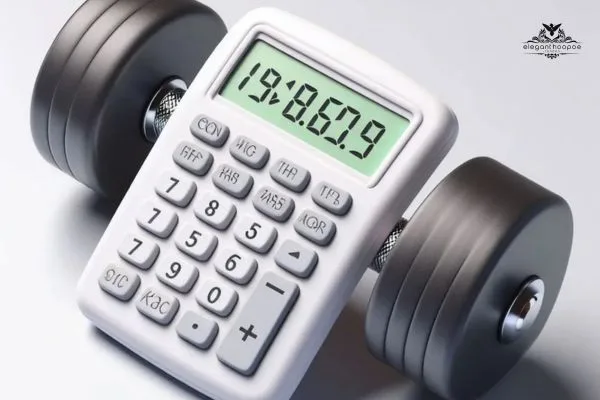What Is a Child BMI Calculator and How Does It Help Track Healthy Growth?
A Child BMI Calculator helps parents assess if their child’s weight is appropriate for their age, height, and gender. It calculates BMI and compares it to growth chart percentiles to identify underweight, healthy weight, overweight, or obesity. Key takeaways:
- Uses age- and gender-specific percentiles
- Detects early signs of weight issues
- Supports healthy growth tracking over time
Use it with regular check-ups, balanced nutrition, and physical activity for your child’s well-being.
As a parent or guardian, ensuring your child is growing and developing in a healthy way is a top priority. Understanding your child’s Body Mass Index (BMI) can be a valuable tool in assessing their growth and overall health. A child BMI calculator—also known as a pediatric BMI calculator—provides a quick and easy way to determine whether your child’s weight is appropriate for their age, height, and gender.
In this blog post, we’ll explore what BMI means for children, how it differs from adult BMI, and how you can use a BMI calculator for kids to monitor your child’s health. Let’s get started!

What Is BMI, and Why Does It Matter for Children?
Body Mass Index (BMI) is a measurement that uses a person’s height and weight to estimate body fat. For adults, BMI is typically categorized into ranges like underweight, normal weight, overweight, and obese. However, for children, BMI is interpreted differently because their bodies are still growing and developing.
For kids, BMI is age- and gender-specific because children grow at different rates and their body composition changes as they mature. This is why pediatric BMI is compared against standard growth charts developed by organizations like the Centers for Disease Control and Prevention (CDC) or the World Health Organization (WHO). These charts provide BMI percentiles that indicate how a child’s BMI compares to others of the same age and gender.
How Is BMI for Kids Calculated?
A pediatric BMI calculator uses the same formula as adult BMI, but the results are interpreted differently. The formula is:
BMI = weight (kg) ÷ [height (m)]²
Alternatively, for measurements in pounds and inches:
BMI = [weight (lbs) ÷ height (inches)²] × 703
However, instead of simply categorizing the number as underweight, normal, overweight, or obese, a child’s BMI is plotted on a growth chart to determine their BMI percentile.
Weight
Height
Age

What Are BMI Percentiles?
BMI percentiles are used to compare a child’s BMI to other children of the same age and gender. Here’s how you should categorize the percentiles:
- Underweight: Below the 5th percentile
- Healthy weight: 5th to 85th percentile
- Overweight: 85th to 95th percentile
- Obese: 95th percentile or above
For example, if your child’s BMI is in the 70th percentile, it means their BMI is higher than 70% of children of the same age and gender.

Why Is Tracking BMI Important for Kids?
BMI is a useful screening tool that gives parents and healthcare providers an idea of whether a child’s weight is appropriate for their height and age. While it doesn’t directly measure body fat or diagnose health conditions, tracking BMI can help identify potential growth or health issues early on.
Benefits of Monitoring BMI in Children
- Early Detection of Weight Issues: Whether your child is underweight or overweight, identifying the issue early allows you to address it before it leads to health complications.
- Tracking Growth Patterns: Changes in BMI over time can provide insight into your child’s overall growth and development.
- Preventing Health Risks: Maintaining a healthy BMI reduces the risk of conditions like diabetes, high blood pressure, and heart disease later in life.
How to Use a Child BMI Calculator
Using a BMI calculator for kids is simple and only requires a few key pieces of information:
- Height: Measure your child’s height in inches or centimeters.
- Weight: Weigh your child in pounds or kilograms.
- Age: Enter your child’s age in months or years.
- Gender: Specify your child’s gender, as growth patterns differ between boys and girls.
After entering this information, the calculator will provide your child’s BMI and their corresponding BMI percentile. Many online pediatric BMI calculators also plot the result on a growth chart for easier interpretation.

What Does Your Child’s BMI Percentile Mean?
Once you know your child’s BMI percentile, you can better understand what it says about their weight status:
- Below the 5th Percentile (Underweight): This may indicate that your child isn’t getting enough nutrients or has an underlying medical condition affecting their growth.
- 5th to 85th Percentile (Healthy Weight): Your child’s weight is appropriate for their height and age.
- 85th to 95th Percentile (Overweight): This suggests your child may be carrying excess weight, which could lead to health risks if not addressed.
- Above the 95th Percentile (Obese): This indicates a higher risk of weight-related health issues and may require medical intervention.
If your child falls outside the healthy weight range, it’s important to consult with a pediatrician or healthcare provider. They can assess your child’s overall health and provide personalized recommendations.
Tips for Supporting Healthy Growth in Kids
Tracking BMI is just one part of maintaining your child’s health and weight management. Here are some tips to support their healthy growth and development:
1. Encourage a Balanced Diet
- Serve a variety of fruits, vegetables, whole grains, lean proteins, and healthy fats.
- Limit sugary snacks, sodas, and processed foods.
- Teach your child about portion sizes and the importance of eating a balanced meal.
2. Promote Physical Activity
- Aim for at least 60 minutes of physical activity per day, such as playing sports, riding bikes, or dancing.
- Limit screen time, including TV, video games, and smartphones.
3. Focus on Healthy Habits, Not Weight
- Avoid labeling foods as “good” or “bad.” Instead, emphasize how certain foods help the body stay strong and energized.
- Foster a positive body image by focusing on health rather than appearance.
4. Schedule Regular Check-Ups
- Regular visits to the pediatrician allow for ongoing monitoring of your child’s growth and development.
- Discuss BMI results with your doctor to ensure your child is on track.
When to Seek Help
If your child’s BMI is consistently outside the healthy range or if you’re concerned about their eating habits, physical activity, or growth patterns, don’t hesitate to seek professional advice. A pediatrician or dietitian can provide tailored guidance and help address any underlying issues.

Final Thoughts: Everything About the Child BMI Calculator
A child BMI calculator is a powerful tool for tracking your child’s growth and ensuring they’re on a healthy path. By understanding their BMI percentile and monitoring changes over time, you can catch potential issues early and take proactive steps to support their well-being.
Remember, BMI is just one measure of health. A holistic approach that includes a balanced diet, regular physical activity, and routine medical care is key to helping your child grow up strong and healthy. If you’re unsure about your child’s BMI or growth patterns, consult a healthcare professional for personalized guidance.
Start using a pediatric BMI calculator today to take the first step toward supporting your child’s health and development!
References








